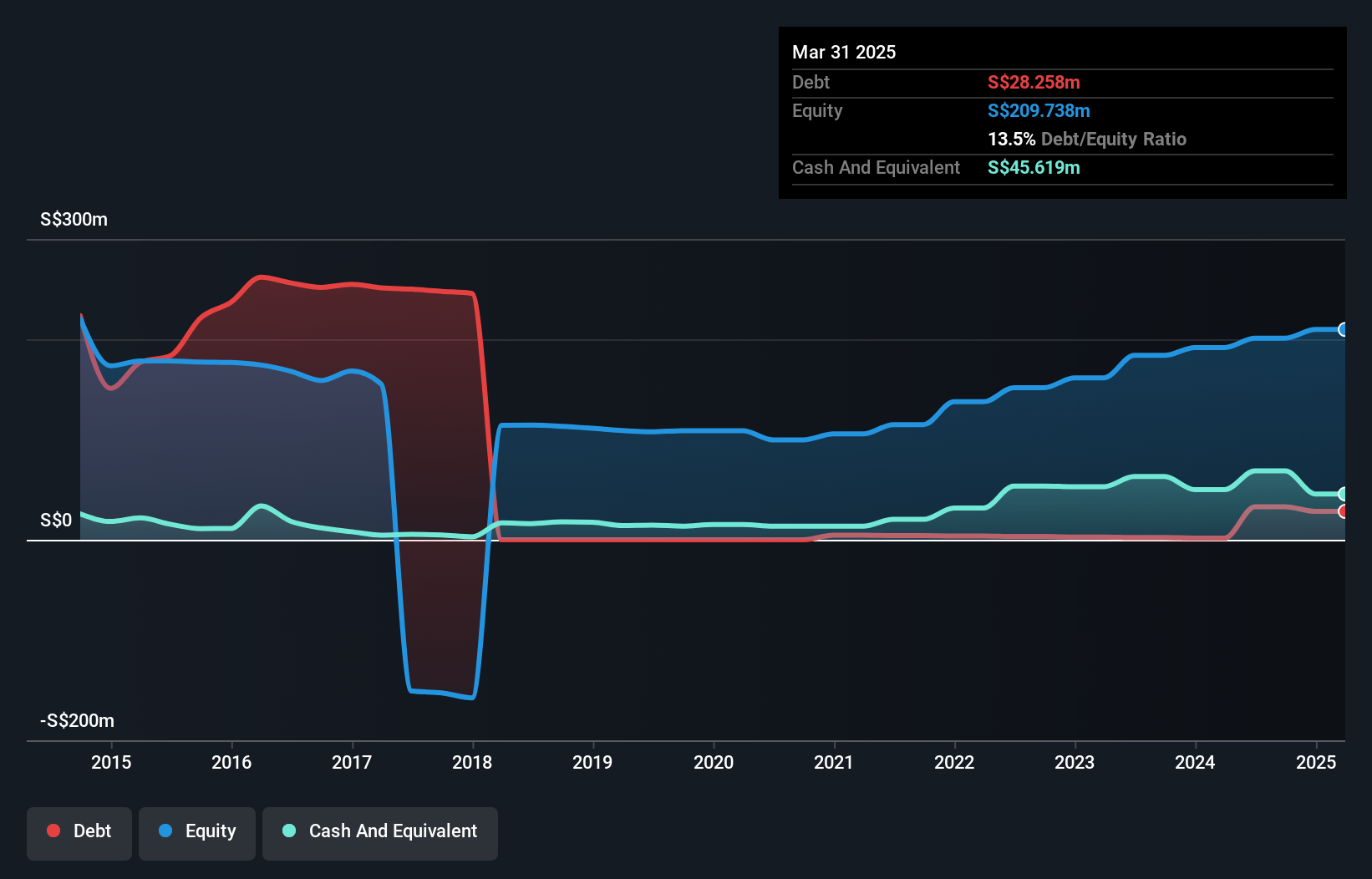Marco Polo Marine (SGX:5LY) Has A Somewhat Strained Balance Sheet
Howard Marks put it nicely when he said that, rather than worrying about share price volatility, 'The possibility of permanent loss is the risk I worry about... and every practical investor I know worries about.' So it seems the smart money knows that debt - which is usually involved in bankruptcies - is a very important factor, when you assess how risky a company is. We note that Marco Polo Marine Ltd. (SGX:5LY) does have debt on its balance sheet. But the real question is whether this debt is making the company risky.
Trump has pledged to "unleash" American oil and gas and these 15 US stocks have developments that are poised to benefit.
Why Does Debt Bring Risk?
Debt and other liabilities become risky for a business when it cannot easily fulfill those obligations, either with free cash flow or by raising capital at an attractive price. Part and parcel of capitalism is the process of 'creative destruction' where failed businesses are mercilessly liquidated by their bankers. However, a more frequent (but still costly) occurrence is where a company must issue shares at bargain-basement prices, permanently diluting shareholders, just to shore up its balance sheet. Of course, plenty of companies use debt to fund growth, without any negative consequences. When we examine debt levels, we first consider both cash and debt levels, together.
What Is Marco Polo Marine's Net Debt?
You can click the graphic below for the historical numbers, but it shows that as of March 2025 Marco Polo Marine had S$28.3m of debt, an increase on S$1.75m, over one year. However, its balance sheet shows it holds S$45.6m in cash, so it actually has S$17.4m net cash.

A Look At Marco Polo Marine's Liabilities
According to the last reported balance sheet, Marco Polo Marine had liabilities of S$59.4m due within 12 months, and liabilities of S$18.0m due beyond 12 months. Offsetting this, it had S$45.6m in cash and S$41.0m in receivables that were due within 12 months. So it can boast S$9.23m more liquid assets than total liabilities.
This surplus suggests that Marco Polo Marine has a conservative balance sheet, and could probably eliminate its debt without much difficulty. Succinctly put, Marco Polo Marine boasts net cash, so it's fair to say it does not have a heavy debt load!
See our latest analysis for Marco Polo Marine
In fact Marco Polo Marine's saving grace is its low debt levels, because its EBIT has tanked 32% in the last twelve months. When a company sees its earnings tank, it can sometimes find its relationships with its lenders turn sour. There's no doubt that we learn most about debt from the balance sheet. But ultimately the future profitability of the business will decide if Marco Polo Marine can strengthen its balance sheet over time. So if you're focused on the future you can check out this free report showing analyst profit forecasts.
Finally, a company can only pay off debt with cold hard cash, not accounting profits. Marco Polo Marine may have net cash on the balance sheet, but it is still interesting to look at how well the business converts its earnings before interest and tax (EBIT) to free cash flow, because that will influence both its need for, and its capacity to manage debt. During the last three years, Marco Polo Marine burned a lot of cash. While investors are no doubt expecting a reversal of that situation in due course, it clearly does mean its use of debt is more risky.
Summing Up
While we empathize with investors who find debt concerning, you should keep in mind that Marco Polo Marine has net cash of S$17.4m, as well as more liquid assets than liabilities. So while Marco Polo Marine does not have a great balance sheet, it's certainly not too bad. When analysing debt levels, the balance sheet is the obvious place to start. But ultimately, every company can contain risks that exist outside of the balance sheet. Case in point: We've spotted 1 warning sign for Marco Polo Marine you should be aware of.
If you're interested in investing in businesses that can grow profits without the burden of debt, then check out this free list of growing businesses that have net cash on the balance sheet.
New: Manage All Your Stock Portfolios in One Place
We've created the ultimate portfolio companion for stock investors, and it's free.
• Connect an unlimited number of Portfolios and see your total in one currency• Be alerted to new Warning Signs or Risks via email or mobile• Track the Fair Value of your stocks
Try a Demo Portfolio for FreeHave feedback on this article? Concerned about the content? Get in touch with us directly. Alternatively, email editorial-team (at) simplywallst.com.This article by Simply Wall St is general in nature. We provide commentary based on historical data and analyst forecasts only using an unbiased methodology and our articles are not intended to be financial advice. It does not constitute a recommendation to buy or sell any stock, and does not take account of your objectives, or your financial situation. We aim to bring you long-term focused analysis driven by fundamental data. Note that our analysis may not factor in the latest price-sensitive company announcements or qualitative material. Simply Wall St has no position in any stocks mentioned.
免责声明:投资有风险,本文并非投资建议,以上内容不应被视为任何金融产品的购买或出售要约、建议或邀请,作者或其他用户的任何相关讨论、评论或帖子也不应被视为此类内容。本文仅供一般参考,不考虑您的个人投资目标、财务状况或需求。TTM对信息的准确性和完整性不承担任何责任或保证,投资者应自行研究并在投资前寻求专业建议。
热议股票
- 1
- 2
- 3
- 4
- 5
- 6
- 7
- 8
- 9
- 10